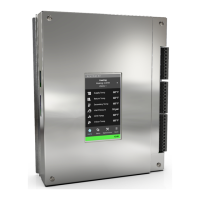3.7.2 Internet connectivity 44
3.7.3 Ethernet switch device (recommended) 44
3.7.4 BoilerNet two-wire CAN bus daisy chain cabling 44
4.1 Configuring loads using Setup (recommended) 49
4.1.1 Configuring a load on a boiler 50
4.1.2 Syncing zones with "Zone Of" 51
4.1.3 Changing an assigned control mode on a load type 51
4.1.4 Removing an assigned control mode from a load 52
4.1.5 Changing settings in a load 52
4.2 Setting loads using Advanced Setup 52
4.3 Setting up an external control load 53
4.4 Setting up external control to control water temperature in a single boiler or in each
boiler wired on a network 54
4.5 Combining two loads to service two loads at the same time 55
4.5.1 Combining loads using "basic mode" 55
4.5.2 Combining loads using "full mode" 56
5.0 Configuring multiple boiler systems 57
5.1 Checklist for configuring multiple boilers 57
5.2 Configuring a master boiler 57
5.3 Configuring a subordinate boiler 58
5.4 Confirming network programming was successful 59
5.5 Confirming number of boilers available and firing on the network 59
5.6 Assigning fixed IP addresses to boilers on a network using a switch not connected
to the internet 59
5.7 Using the master to control a group of IBC boilers with 5-button-type controllers
via a BACnet gateway 60
5.8 Setting up an IBC air handler to send data to an IBC boiler to control its reset
heating curve 60
6.1 Start-up checklist 61
6.2 Testing the ignition safety shutoff 62
6.3 Testing the Hi-limit temperature function 62
6.4 Testing the low water cutoff (LWCO) function 62

